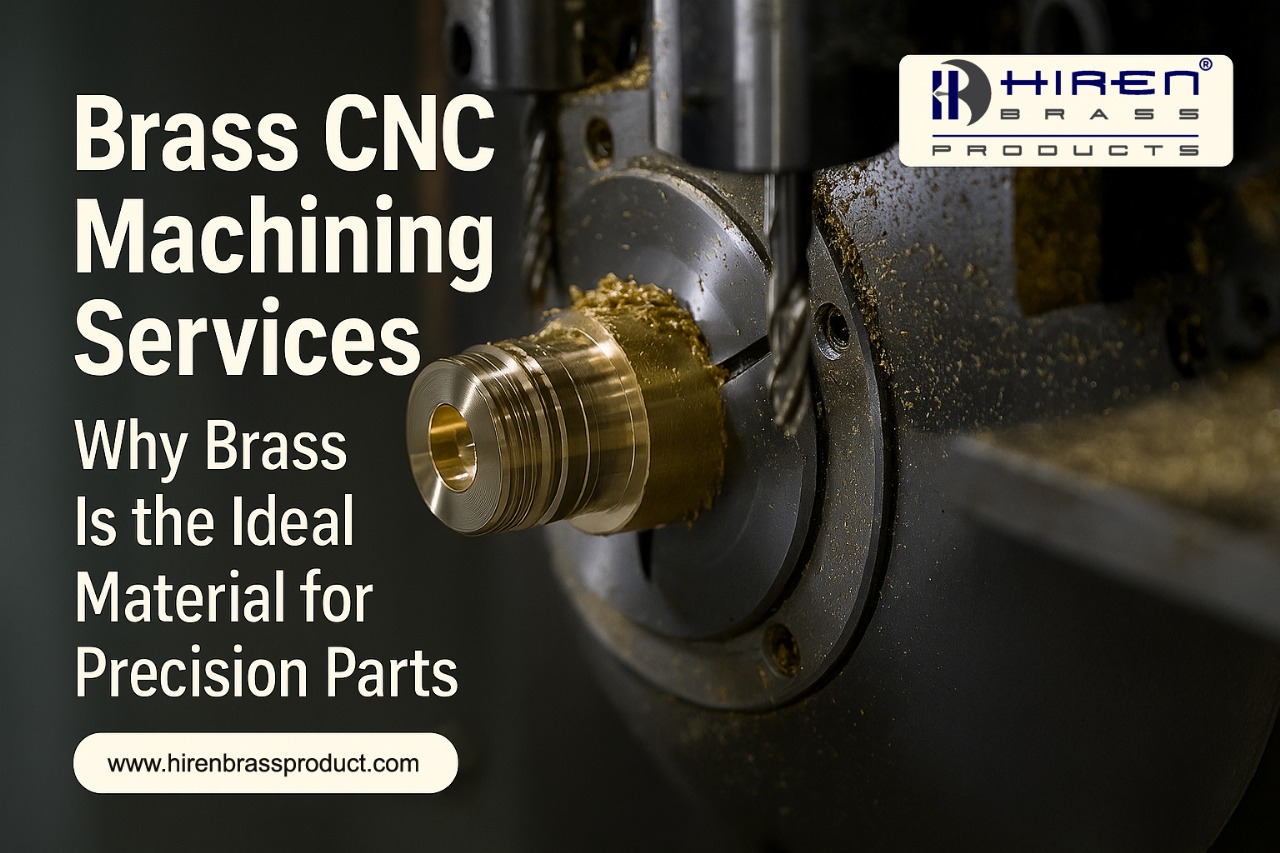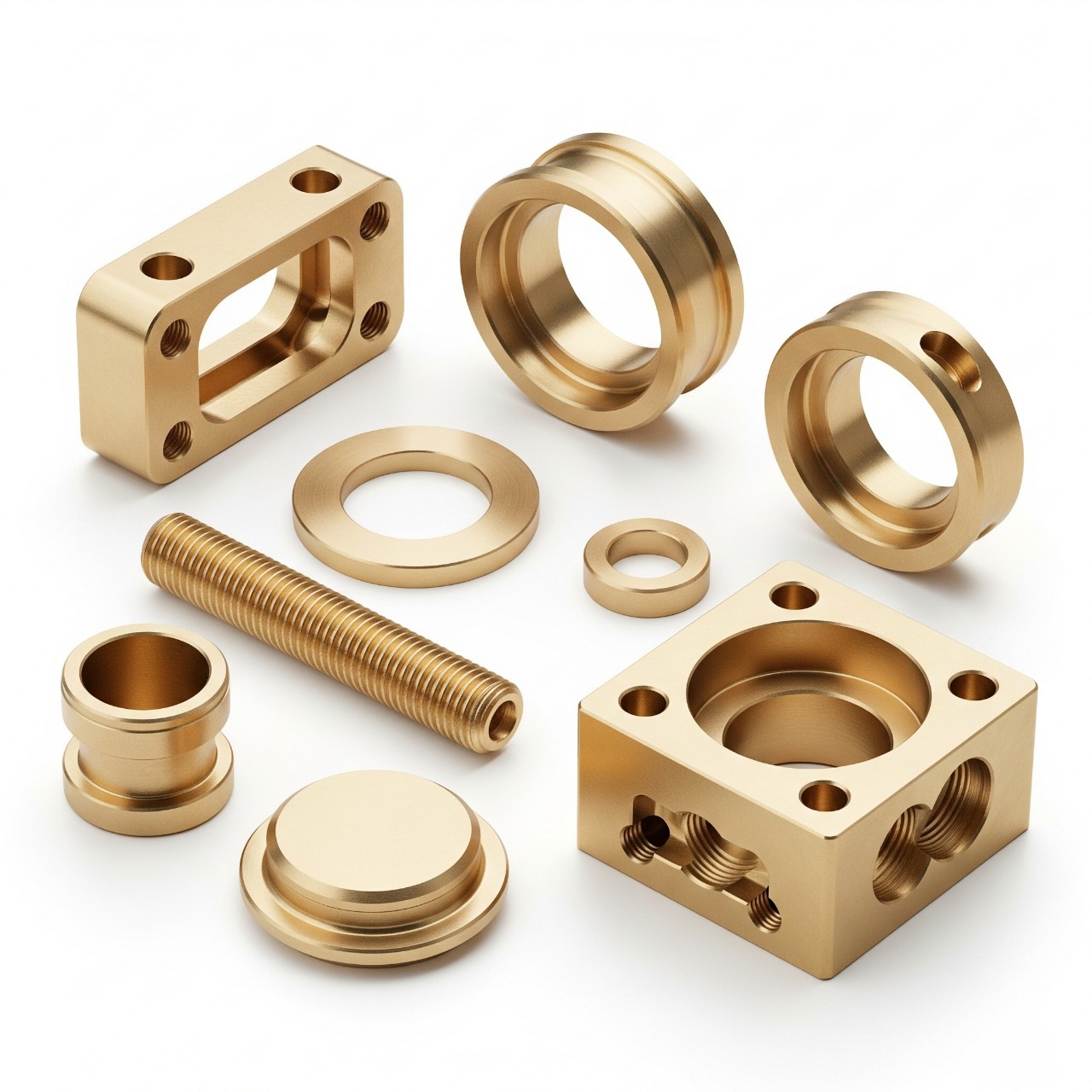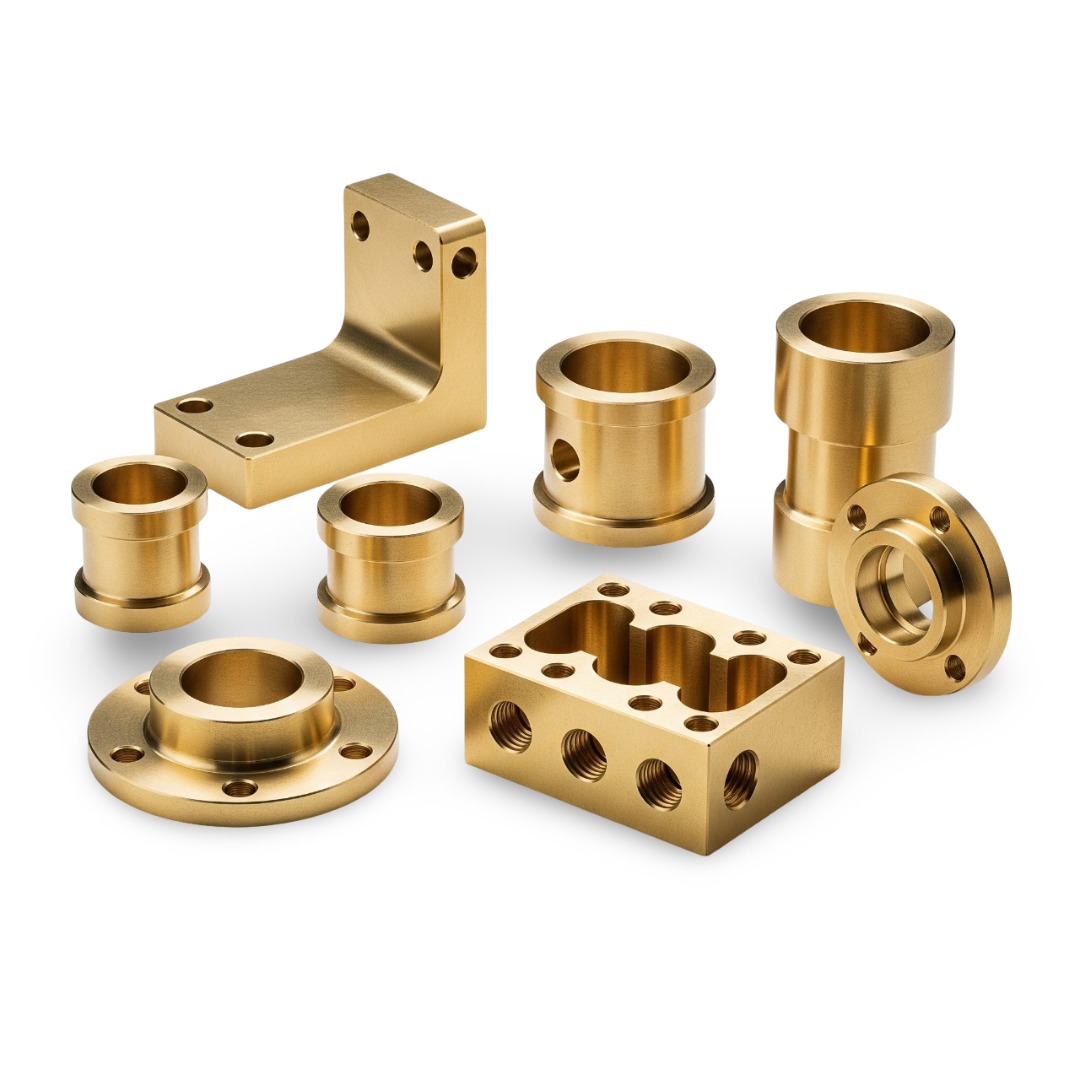
Brass CNC machining is trusted for making precise and durable components. It gives smooth cutting, clean edges, and accurate shapes. The material handles well on both turning and milling machines. We trust brass for machinability, strength, and good surface finish
Brass is easy to machine compared to steel. It does not wear tools quickly, which helps reduce machining costs and production time.
Manufacturers prefer brass CNC machined parts for electrical, plumbing, and industrial assemblies. The surface finish is naturally bright, which often removes the need for extra polishing.
Every brass CNC precision part holds tight tolerances. This makes it ideal for fittings, inserts, and precision connectors used in mass production.
Brass offers a strong mix of strength, corrosion resistance, and easy machining. That is why it remains one of the best materials for CNC precision work today.
Let us look at the key reasons why brass stands out as the ideal material for precision CNC components. Each property plays a direct role in how your parts perform, machine, and last in real applications. Knowing these factors will help you choose materials based on data, not assumption, for your next production run.
What is Brass CNC Machining?

Ask any machinist what material runs smoothest on a CNC, and the answer will come fast: brass. There is a reason for that. Brass cuts clean, forms predictable chips, and holds dimension with almost no fight. It behaves exactly how you want a material to behave when precision matters.
Brass CNC machining is simply the process of shaping brass bars on computer-controlled machines. These machines use precise tool paths to remove material, producing parts that come out ready to fit - no rework, no polishing marathons. That is what separates brass CNC machined parts from other metals.
When you machine brass cnc components, the material responds like it wants to cooperate. The chips break short, the surface comes out bright, and the tool edges stay sharp longer. That means less downtime and tighter production control.
Turning is where you see brass at its best. brass turned parts spin cleanly on the lathe, producing threads and round features with perfect definition. No burrs, no chatter, just clean geometry every time.
CNC machining turns brass into the most reliable choice for precision work. It saves time, saves tools, and keeps tolerances steady through every batch. That is why machinists trust brass for consistency - not by theory, but by experience.
| Performance Factor | Brass Output | Compared to Other Metals | Effect on Production |
|---|---|---|---|
| Cutting Speed | 400–600 SFM under standard CNC conditions | Two to three times faster than mild steel | Shorter cycle times and higher daily throughput |
| Tool Life | Over 100,000 parts per tool setup | Roughly double the lifespan seen with aluminum | Significant savings on tooling and maintenance |
| Chip Control | Predictable chip break and easy evacuation | Consistent, self-breaking chips unlike long steel strands | Fewer stoppages and smoother machine operation |
| Surface Finish | Achieves around 32 Ra straight off the machine | Superior to most ferrous metals | Minimal or no secondary polishing required |
Overview of the Precision Machining Services Process
Every brass part begins as a simple bar, but CNC machining turns it into something exact. The process starts with design data. Each dimension, tolerance, and surface finish is defined before the first cut begins. Precision here saves rework later.
On the shop floor, the first stage is usually turning. Brass turning parts are shaped on CNC lathes to create accurate diameters, threads, and round features. The cutting action stays smooth, and the chips break short. Brass allows high spindle speeds without vibration, which means tighter tolerances and cleaner edges.
For shapes that require flat surfaces, the next step is milling. CNC milled part are produced on 3-axis and 5-axis machines, depending on geometry. The tools move along multiple directions to remove material layer by layer, leaving crisp edges and fine detail.
Each finished piece is inspected for tolerance and surface quality. Most brass CNC machining parts come off the machine with a natural shine that meets finish requirements without polishing. Consistent results, shorter setup times, and smooth workflow make brass ideal for both prototype and mass production runs.
That is how precision machining services transform raw brass stock into accurate, repeatable, and ready-to-assemble components.
Cost-effectiveness in Precision Components Manufacturing
Brass offers clear economic benefits for precision machining. It cuts faster, wears tools slower, and produces fewer rejects. For manufacturers, that means more finished brass cnc components in less time and lower cost per part.
| Cost Factor | Brass Advantage | Cost Impact | ROI Timeline |
|---|---|---|---|
| Machining Time | 40% faster | -25% labor cost | Immediate |
| Tool Life | 2× longer | -50% tool expense | First batch |
| Setup Time | 30% less | -20% overhead | Per run |
| Scrap Rate | Under 2% typical | -15% material waste | Continuous |
These efficiencies compound over production runs. Consistent brass precision parts help maintain output quality and stability. For high-volume CNC parts, brass remains one of the most cost-effective materials to machine.
Why Brass is Preferred for Precision Components Manufacturing

Brass delivers a balance of strength, accuracy, and durability that most metals cannot match. Its stable structure allows tight machining tolerances and repeatable results in every run.
Brass cnc precision parts hold their shape even under high temperature changes. The material resists corrosion and oxidation, which makes it suitable for fittings, connectors, and mechanical inserts.
Because brass conducts electricity and heat efficiently, it is widely used in electrical and electronic assemblies. Manufacturers trust brass precision parts for reliability in long-term operation.
In short, brass cnc machining parts combine dimensional stability with easy machinability, making them a top choice for consistent, high-quality production.
Tight Tolerances and Accuracy in Brass Machining
Brass responds precisely to cutting forces, which allows machines to hold exact dimensions across long runs. The material’s uniform grain and low hardness reduce vibration and tool deflection, ensuring steady accuracy for every part.
| Parameter | Typical Value for Brass | Production Benefit |
|---|---|---|
| Dimensional Tolerance | ±0.01 mm achievable | Consistent fit in assemblies |
| Surface Finish | 16–32 Ra direct from machine | Minimal polishing required |
| Roundness Control | Up to 0.005 mm | Perfect for precision inserts and bushings |
| Repeatability | 99.8% across batch | Reliable quality over mass production |
These characteristics make brass parts ideal for high-tolerance applications such as instrumentation, valves, and precision fittings.
How Precision Brass Machining Services Ensure Quality

Ever had a part come off the machine looking finished before it even hits the polishing line? That is what precision brass machining does. The metal cuts so clean that its surface looks refined straight off the tool. In precision work, that surface quality is not cosmetic - it decides how the part seals, fits, and performs.
Quality control in brass machining starts long before inspection. Every bar is traced by material lot, verified for composition, and machined under controlled conditions. The process ensures consistent brass CNC machining parts from the first run to the last.
Brass also allows machinists to hit exact surface finishes without rework. While most alloys need grinding, brass reaches production-level smoothness in a single pass. That shortens lead time and keeps costs predictable.
| Surface Type | Ra Value | Process Required | Typical Applications |
|---|---|---|---|
| As-Machined | 32–125 Ra | Single pass | General components |
| Semi-Finished | 16–32 Ra | Optimized cutting | Bearing surfaces |
| Fine Finish | 4–16 Ra | Light finishing | Sealing surfaces |
| Mirror Finish | Under 4 Ra | Final polish | Optical or visible parts |
Each surface grade links directly to function. Clean, bright, and accurate - that is how precision brass machining ensures quality without unnecessary steps.
Typical Production Considerations and Challenges
Even though brass machines cleanly, precision production still needs control. The main challenge is managing burrs on fine edges. Small burrs can form during high-speed turning or drilling, especially on thin walls. Consistent deburring cycles and proper tool geometry help avoid that.
Tool wear is another factor. Brass is soft, but continuous runs can cause minor tool loading. Keeping sharp inserts and steady coolant flow prevents buildup and maintains part accuracy.
Each of these points - burr removal, tool maintenance, and surface control-decides the real quality of a brass precision part once it leaves the machine.
Get a Free Quote for Brass CNC Machining Services
Precision starts with the right material and process. Brass delivers both. Whether you need complex turned parts or milled components, our machining team produces consistent results with tight tolerances and clean finishes.
Each project is inspected, measured, and verified for accuracy before delivery. That is how we keep every batch reliable and production-ready.
Contact us today to discuss your next project or Request Quote for precision brass CNC machining services

